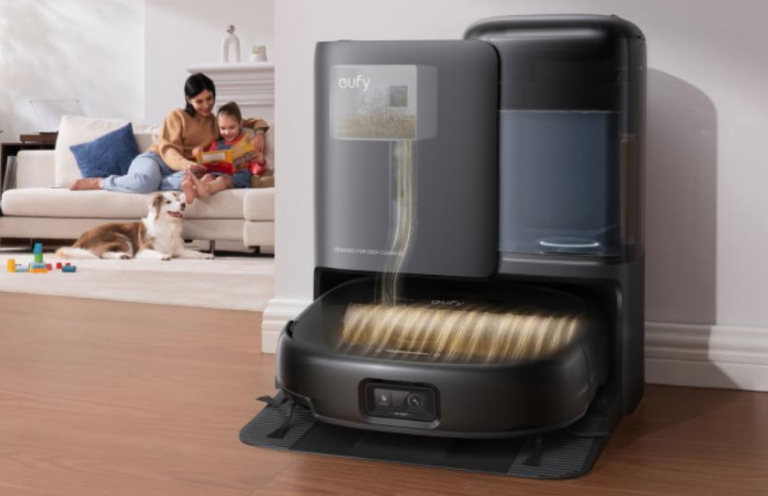Robot vacuums offer convenience and efficiency, transforming our cleaning routines. However, to keep these smart gadgets at their best, routine maintenance is crucial. Without proper care, a robot vacuum can lose efficiency, leading to less effective cleaning and possibly even damage over time. Familiarizing yourself with basic upkeep tasks can significantly enhance your vacuum’s performance and lifespan. This guide provides essential tips and practical advice on maintaining your robot vacuum. From cleaning the dustbin to maintaining the battery, you’ll learn simple strategies to ensure your device runs at its peak, saving you time and keeping your home spotless effortlessly.
Steps to Maintain Your Robot Vacuum
Caring for your robot vacuum involves a few straightforward steps. Regularly empty and clean the dustbin and filter to prevent clogs. Inspect and clean the brushes to ensure dirt is captured effectively. Battery maintenance is vital, too—keeping it charged and replacing it when necessary prolongs your vacuum’s life. By following these steps, you’ll ensure your robot vacuum remains efficient and effective.
Cleaning the Dustbin and Filter
Start by removing the dustbin from your robot vacuum. Empty the contents into the trash, tapping gently to remove stubborn debris. Clean the dustbin with a damp cloth to remove dust particles. Next, focus on the filter. Over time, filters collect dust and impede performance. Check your vacuum’s manual for specific instructions, but generally, you should rinse the filter with water and allow it to air dry completely before reinserting it. For HEPA filters, never use water; instead, gently tap to release the dust, or use a brush to remove particles. Doing this every one to two weeks ensures optimal suction power and prevents motor strain, keeping your unit running smoothly.
Checking and Cleaning the Brushes
The brushes underneath your robot vacuum trap hair, dust, and debris. To maintain peak performance, remove and inspect them regularly. Use a cleaning tool or a pair of scissors to cut away tangled hair and carpet fibers, being careful not to damage the bristles. Also, check for any debris caught in the brush compartments. Ball bearings in the brush assembly can wear over time, so make sure they’re functioning smoothly and replace them if necessary. By committing to this simple routine, you’ll help your robot vacuum effectively pick up dirt and maintain a high cleaning standard.
Maintaining the Battery
Robot vacuum batteries can degrade without proper care. To extend battery life, allow the vacuum to discharge fully before recharging. Most models will automatically return to their dock; however, manually guiding yours to the dock occasionally can help with calibration. Avoid leaving the vacuum on the dock for extended periods, as this can lead to overcharging. If your vacuum struggles to hold a charge, it might be time for a battery replacement. Consult your model’s manual for guidance on choosing and installing a new one. Proper battery care not only extends runtime but also prevents unexpected interruptions during cleaning.
How Often Should You Clean Your Robot Vacuum?
Consistency is key when it comes to robot vacuum maintenance. For optimal performance, clean the dustbin and filter once a week, or more frequently if you have pets. Brushes and wheels should be checked bi-weekly to prevent tangles and ensure proper movement. Monthly, perform a thorough inspection of your vacuum to address any emerging issues early. Also, pay attention to your vacuum’s performance; if it starts leaving dirt behind or struggles to navigate your home, it might need more frequent cleaning. A regular maintenance schedule keeps your robot vacuum efficient and extends its life, ensuring a cleaner home with less hassle.
Common Faults of Robot Vacuum Cleaners
Even well-maintained robot vacuums can encounter issues. Common faults include diminished suction power, often due to clogged filters or full dustbins. Navigation problems may arise from dirty or worn sensors. If your vacuum is noisy, suspect tangled brushes or loose components. Battery-related issues, like reduced runtime or failure to charge, might indicate a deteriorating battery. Before sending your vacuum for repairs, consult the manual for troubleshooting tips. Many issues are straightforward to resolve with simple cleaning and part replacements. Staying vigilant with maintenance helps prevent these problems, ensuring your robot vacuum operates smoothly and effectively.
Conclusion
Proper maintenance of your robot vacuum ensures it operates at optimal performance, providing efficient cleaning and long-lasting service. By regularly cleaning the dustbin, brushes, and maintaining the battery, you not only improve the device’s functionality but also extend its lifespan. Routine upkeep prevents common faults and keeps your home spotless with minimal effort. By investing a little time in maintenance, you protect your investment, ensuring your vacuum continuously delivers the convenience and efficiency you rely on. Keep your robot vacuum in top shape with these straightforward steps, and enjoy a cleaner, hassle-free environment.

